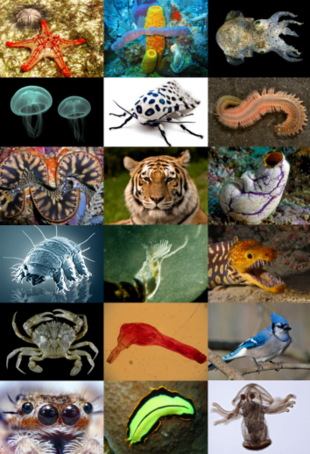| Ainimals | |
|---|---|

| |
| Scientific classification | |
| (unranked): | Unikonta |
| (unranked): | Obazoa |
| (unranked): | Opisthokonta |
| (unranked): | Holozoa |
| (unranked): | Filozoa |
| Kinrick: | Animalia Linnaeus, 1758 |
| Phyla | |
| |
Ainimals is multicellular, eukaryotic organisms o the kinrick Animalia (forby cried Metazoa). Aw ainimals are motile, meanin thay can muiv spontaneously an independently, at some pynt in thair lifes. Thair body plan hidnerly becomes fixed as thay develop, tho some unnergang a process o metamorphosis later on in thair lifes. Aw ainimals is heterotrophs: thay maun ingest ither organisms or thair products for sustenance.
Maist kent ainimal phyla appeared in the fossil record as marine species in the Cambrian explosion, aboot 542 million year syne. Ainimals is dealt intae sindry sub-groups, some o whilk is: vertebrates (birds, mammals, amphibians, reptiles, fish); molluscs (clams, eysters, octopuses, ink-fish, snails); arthropods (meggie-mony-feets, jennie-hunder-feets, insects, speeders, scorpions, keavies, lapsters, saund-clapper); annelids (yirdwirms, gells); spoonges; an loch-livers.